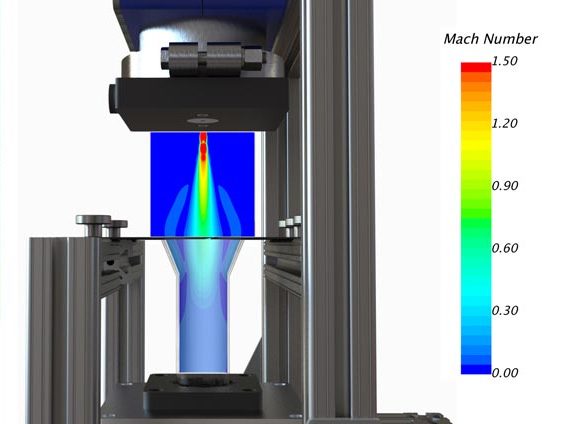Dominion Engineering, Inc. consulting projects always include application of first principles to ensure the engineering fundamentals of the problem are fully understood. Dominion Engineering, Inc. often supplements these calculations with modeling, simulation and/or experimental testing to provide enhanced technical consulting services. Our modeling and simulation expertise includes:

Dynamic Response Analysis: For more than 15 years, Dominion Engineering, Inc. has supported design of the Hanford waste treatment plant as a key technical consultant, evaluating the risk and consequences of hydrogen accumulation and potential detonation when processing transuranic (TRU) waste streams. Dominion Engineering, Inc. contribution to this project have included:
Dominion Engineering, Inc. has presented technical findings and recommendations to the US DOE and the US DNFSB.

EPRI Research Program: Dominion Engineering, Inc. has more than 30 years of experience welding simulation and recently led a multi-year EPRI research program to validate residual stress models for dissimilar metal welds in nuclear components. As documented in EPRI reports MRP-316 and MRP-317 (3002005498 and 3002005499), Dominion Engineering, Inc. contributions to this effort included:

CFD Modeling & Experimental Validation: The integrated waste treatment unit (IWTU) in Idaho uses sonic gas pulses to backwash and regenerate gas filters operating at high temperature. Optimization of the gas pulse system and downstream Venturi block geometry is needed to ensure the desired performance is achieved, maximizing filter regeneration. Dominion Engineering, Inc. has provided the following technical consulting and support for this effort:
Dominion Engineering, Inc. modeling and experimental validation has supported improved understanding of the design and operation of both pilot-scale and full-scale plant conditions, and optimization of the process gas filters for reliable long-term operation.

Root Cause Investigation: The line which feeds liquid hydrogen to space shuttle main propulsion systems includes a flexible joint which accommodates relative motion between the space shuttle structure and main engine. Cracks were detected in Inconel 718 flow liners in this joint for several space shuttles, including Atlantis, Discovery and Endeavor. In support of investigation of the issue by NASA’s Langley Research Center, Dominion Engineering, Inc. completed a root cause investigation of this issue. Specific assistance and insights provided by Dominion Engineering, Inc. in this investigation included:
These results contributed to NASA’s resolution of the issue, which included identification appropriate inspection intervals and the development of a high resolution surface replication technique for precise detection of crack initiation locations.

EPRI Research Program: Nuclear plants have experienced cases of material degradation and primary water leaks due to turbulence-driven thermal fatigue. Dominion Engineering, Inc. has supported a multi-year EPRI research program to develop high-resolution industrial models for thermal fatigue using computational fluid dynamics (CFD) and other numerical solvers. Dominion Engineering, Inc. efforts in this area have included:
The efforts above benefit the industry by reducing the risk of unplanned outages due to thermal fatigue degradation, while reducing O&M costs through optimized inspection intervals.